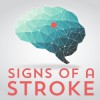May is National Stroke Awareness Month. As many as one in every six people will have a stroke according to the American Stroke Association. If you or a loved one started exhibiting stroke symptoms, would you know what to do? Here are some key stroke facts:
Stroke statistics
- Someone has a stroke every 40 seconds. That’s 2,160 people every day.
- The most common reason U.S. residents are disabled is the result of a stroke.
- Strokes are the fifth highest cause of death in America.
- Nearly 1 in every 20 deaths is caused by stroke.
- Individuals who are having a stroke and seek medical care within 3 hours have a much better chance of recovery and being less disabled than those who wait.
These facts show the importance of understanding potential stroke symptoms so seek help.
Types of strokes
Ischemic strokes are the most common. They occur when a blood vessel in the brain is clogged, cutting off circulation. Hemorrhagic strokes, on the other hand, happen when a blood vessel is weak and tears. Typically people who experience this type of stroke have fragile veins due to an aneurysm or arteriovenous malformation. Hypertension, also known as high blood pressure, can also lead to a hemorrhagic stroke. TIA, which stands for transient ischemic attack, is a clot that temporarily stops blood flow in a vessel but does not last long enough to cause a full stroke. Sometimes TIAs are referred to as warning strokes. They may cause some symptoms but often do not have lasting damage.
Stroke symptoms
When asked, most people would mention numbness as the major sign someone is having a stroke. While this is an important symptom, there are others to look for as well. The Stroke Association recommends learning the acronym FAST:
- Face drooping
- Arm weakness
- Speech difficulty
- Time to call 911

Risk factors for a stroke
The American Heart Association and American Stroke Association noted that a person’s likelihood of having a stroke doubles every 10 years after they have turned 55. Older people are most affected by strokes, yet it is not unheard of for those younger than 55 to have a stroke. Having an immediate family member who had a stroke also increases the chance that another family member will experience one. Gender is another important factor. Women are at an increased risk of having strokes, and those who do, pass away as a result of one more often than men.
Reducing your senior loved one’s stroke risk
There are many things you cannot change about an individual, such as his or her sex and genetic makeup. However, you can be an advocate for his or her health by talking about strokes. Explain the FAST acronym and any symptoms he or she should look for. Next, talk with the senior’s doctors to learn if any prescriptions he or she is taking may carry an increased stroke risk. The physician may also share tips to help the senior improve his or her health and avoid having a stroke in the future.
If you found an error, highlight it and press Shift + Enter or click here to inform us.



